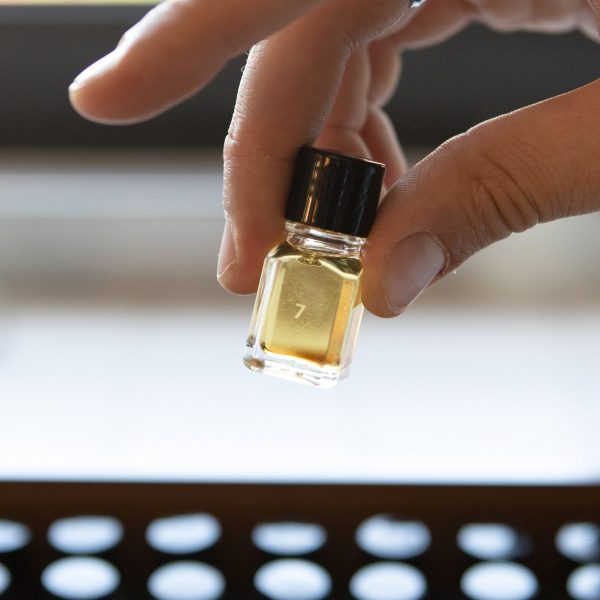Blog
“A coffee with” is a way to learn about life at the old La Marzocco factory by the people who have experienced it.
We took a coffee and chatted with Roberto Bianchi, Chief Operations Officer at La Marzocco. The first engineer to ever be hired at La Marzocco, Roberto witnessed the massive growth La Marzocco had in the last 20 years.
I was the first engineer to be hired at La Marzocco. It was 2000.
My history at La Marzocco started by coincidence. I was living and working in Bergamo (Northern Italy) and had a relationship with Alessia, who is now my wife. She was born and was living in Pian di San Bartolo, only a few meters away from La Marzocco. I was planning on moving to Tuscany, and Alessia kept telling me to send La Marzocco my CV. I did and after a week they got back to me. I found out only later that in those days Piero Bambi and the then CEO Ron Cook, had published a job posting for an engineer in the local newspaper. At that time, it was Piero who designed machines. It was ten years since the Linea was launched and it was time to market a new product.
Frankly, I didn’t see the job posting, but they were really surprised by the success of their initiative.
Between my first interview and my first day at La Marzocco, three months went by. When I settled in, the employees told me that Piero had been nervous and stressed over those three months. He was convinced La Marzocco needed an engineer, but he kept arguing and asking everyone: “how is it going to be? What will he want to do? Where do we put him? We don’t even have a desk for him!”. The change made him nervous. But after I got in, he was always by my side.
One of the best memories I have of us together is of my first weeks, when I started using the CAD. They were still designing at the drafting table, the one that’s now at Accademia. I bought the CAD and Piero learned how to use it.
I was very surprised; he was very curious and extremely skilled. He proved to have the willingness and the open-minded approach you would expect from a young boy. It’s not easy at all for someone who has always drawn at the drafting table to change to the computer. It’s a huge change. But Piero sat at his computer doing his exercises, and slowly he began drawing using the CAD. After a while he started working at the first drawings of the GB5. He drew the lion and made different prototypes. It was great. This was the first of many satisfactions I experienced during my time here.
At that time, the company was so small that everything needed to be built and structured. I had to work on the CAD and follow the production, the spare parts, the purchasing, the suppliers, the warehouse… The first years were a lot, spinning like crazy to keep up with everything.
It was nice, though. Little by little, we have put together the different departments. Those firt years still feel like yesterday. We’ve done so much and now we are a great company.
Of course, today we need to work in a different way; with more precision and risk analysis.Things have changed.
Then, La Marzocco was small, but of course that doesn’t mean that a single person can do everything on his own. Piero was struggling with the responsibility of having it on his shoulders. He told me multiple times, he would have preferred having someone that could be a support, someone to share the problems with. I understand it, it depends on who you are. There are people who don’t care about taking decisions on their own, and then there are people who prefer asking for advice. I am like him, and I am glad I can rely on a team of trusted people to confer with. It’s extremely useful to hear their opinions and their perspective on things. Today, we are a big team. While Piero had to handle the workshop, the carpentry, the workers, the suppliers… He couldn’t take care of the sales as well. He took care of 4 or 5 historical customers, but alone he couldn’t do it all. After he hired the first engineer, he started looking for a good salesperson.
When we – the new managers – met, we were more or less the same age. We never stepped on the others’ toes , we all had the same background but different strengths. We came from very similar working experiences, and had felt the same frustrations. We put faith in what we appreciated about Pian di San Bartolo, plus entrusting and caring for the newest generation. This was our biggest achievement over the years.
Of course, there’s also a lot of pride in making our machines, but the biggest success is turning a one-man-show-kind-of-business into a structured corporate company. We put up a team of people with specialized skills; they’ll be able to work together and make their own decisions. Managing everything on your own means taking responsibility for mistakes. It’s not easy, because you are susceptible to criticism and failure.
For those who work on the product, it’s easier. They need to take many decisions and each time a new product gets seen by someone, there’s always something wrong or something to explain. And for how annoying this may be, it teaches you and gets you used to the fact that it’s impossible to make everyone happy.
A good manager can make decisions, take responsibility and risks. The true ability is in quickly noticing if something is wrong and making it right in no time. This is something I learned from the Americans: in Italy, and in general in Europe, mistakes are seen as failures. If you make a mistake, you fail. Instead, in the USA, mistakes can happen: there’s no judgement. As soon as you discover that a mistake was made, you make it right. It’s simply part of the process.
Being small also had its perks. Communication, for instance. At that time, I would step out of my office and had all the workers there. If you’d say something out loud everyone would hear it.
Material handling too. Today we have codes, ERP systems, and different storage areas. You need to have a procedure for handling and moving any component, otherwise, you can lose it. In Pian di san Bartolo, everything was just in front of you: visual management! You knew you had 3 pieces of that component and you could see and count them.
In five minutes you could walk the whole shopfloor, and talk to everyone. It was easier to have everything under control. Today it’s impossible. We are 400 people.



